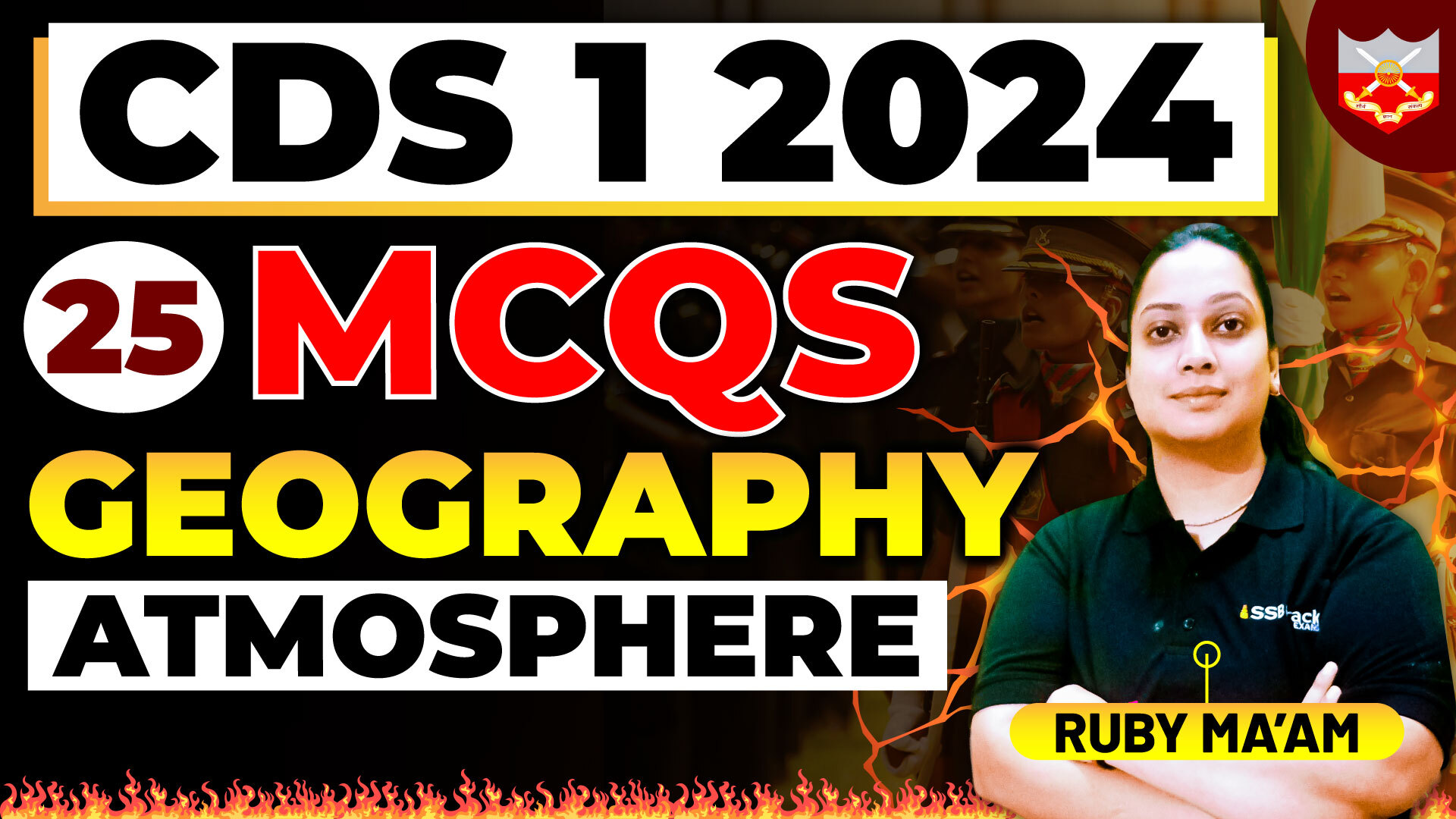Are you preparing for the CDS examination and looking to ace the geography section? Look no further! In this video, we delve into the significance of solving multiple-choice questions (MCQs) specifically focusing on the atmosphere topic.Understanding the atmosphere is paramount for success in the CDS exam, and MCQs play a pivotal role in your preparation journey. By actively engaging with MCQs, you not only enhance your knowledge but also sharpen your problem-solving skills, crucial for tackling diverse question formats.
Atmosphere & It’s Composition
Here’s why MCQs play a crucial role in your preparation for the atmospheric sciences segment of the CDS examination:
1. Assessment of Core Concepts: MCQs serve as a litmus test for your understanding of fundamental concepts. Questions may cover topics such as atmospheric composition, layers, and phenomena like weather patterns, climate change, and atmospheric disturbances. By engaging with MCQs, you assess your grasp on these core concepts, identifying areas that require further study and reinforcement.
2. Application of Knowledge: The CDS examination not only evaluates your theoretical knowledge but also your ability to apply concepts to practical scenarios. MCQs often present real-life situations, requiring candidates to analyze and apply their understanding of atmospheric sciences. Through consistent practice with MCQs, aspirants hone their analytical skills, preparing them to tackle diverse challenges they may encounter in their careers.
3. Time Management Skills: Time is a crucial factor in competitive examinations like the CDS. MCQs, with their fixed answer choices, demand swift decision-making. Aspirants must learn to navigate through questions efficiently, allocating appropriate time to each query while ensuring accuracy. Regular practice with MCQs enhances time management skills, enabling candidates to complete the atmospheric sciences section within the allocated timeframe.
4. Identification of Weak Areas: MCQs provide valuable feedback by highlighting areas of weakness. Incorrect responses indicate concepts that require revision, allowing aspirants to focus their efforts on strengthening these specific areas. Additionally, frequent exposure to MCQs aids in recognizing recurring patterns and types of questions, empowering candidates to devise effective strategies for improvement.
5. Comprehensive Revision Tool: In the lead-up to the examination, MCQs serve as an invaluable revision tool. By consolidating learning through repetitive exposure to questions, aspirants reinforce their understanding of key concepts. Moreover, attempting MCQs from previous years’ papers familiarizes candidates with the examination pattern and helps alleviate exam-related anxiety.
6. Simulation of Examination Environment: Practicing MCQs simulates the actual examination environment, providing a glimpse into the pressure and dynamics of test-taking. Familiarity with the format and structure of MCQs equips aspirants with the confidence to tackle the atmospheric sciences section with composure on the examination day.
7. Strategic Approach to Guessing: While aiming for accuracy is paramount, strategic guessing can also prove beneficial, especially when faced with unfamiliar questions. MCQs often employ techniques such as eliminating improbable options or leveraging contextual clues to make educated guesses. Aspirants adept at strategic guessing maximize their chances of selecting the correct answer, thereby optimizing their overall score.
In conclusion, mastering Multiple Choice Questions (MCQs) is indispensable for CDS aspirants preparing for the atmospheric sciences segment of the examination. Beyond serving as a means of assessment, MCQs facilitate comprehensive learning, enhance analytical abilities, and instill confidence in tackling diverse challenges. By incorporating MCQ practice into their preparation strategy, aspirants can navigate the atmospheric sciences segment with proficiency, paving the way for success in the CDS examination and beyond.
Atmosphere MCQ’s
- Atmospheric Temperature Increases At Higher Altitudes Due To
A. Convection
B. Radiation
C. Conduction
D. Inversion
ANSWER: A - Which One Of The Following Processes Is Not A Part Of Long Wave Radiation
A. Conduction
B. Scattering
C. Convection
D. Radiation
ANSWER: B - Humidity Of The Air
A. Increases With The Increase In Atmospheric Temperature
B. Decreases With The Increase In Atmospheric Temperature
C. Is Not Affected By The Change In Atmospheric Temperature
D. Does Not Show Any Consistent Behaviour With The Change In Atmospheric
Temperature
ANSWER: B - What do You Mean By Relative humidity
A. Increases With Increased Temperature
B. Decreases With Increased Temperature
C. Decreases With Decreased Temperature
D. Has No Relation With Increase Or Decrease Of Temperature
ANSWER: B - Which One Of Following Layers Of Atmosphere Has High Concentration Of Ions
A. Stratosphere
B. Exosphere
C. Thermosphere
D. Troposphere
ANSWER: C - Which Of Following Instruments Used For Measuring Moisture Content Of Air
A. Hydrometer
B. Hygrometer
C. Hypsometer
D. Pycnometer
ANSWER: B - Which One Of Following Statements Is Not Correct
A. The Rate Of Evaporation Depends On Temperature
B. The Rate Of Evaporation Does Not Depend On Surface Area Exposed To The
Atmosphere But On Volume Of The Liquid
C. The Rate Of Evaporation Depends On Humidity Of The Surroundings
D. The Rate Of Evaporation Depends On The Wind Speed
ANSWER: B - Why Are Dewdrops Not Formed On A Cloudy Night
A. Clouds Absorb The Radiation Released From The Earth’s Surface.
B. Clouds Reflect Back The Earth’s Radiation.
C. Earth’s Surface Would Have Low Temperature On Cloudy Nights.
D. Clouds Deflect The Blowing Wind To Ground Level.
ANSWER: B - Which Of Following Is Correct Descending Order Of Permanent Gases Of
Atmosphere
A. Argon > Carbon dioxide > Neon > Helium
B. Carbon dioxide > Argon > Neon > Helium
C. Carbon dioxide > Argon > Helium > Neon
D. Argon > Carbon dioxide > Helium > Neon
ANSWER: A - Which One Of Following Is Correct Order Of Layers In Atmosphere
A. Troposphere, Stratosphere, Mesosphere, Thermosphere, Exosphere
B. Stratosphere, Troposphere, Mesosphere, Thermosphere, Exosphere
C. Stratosphere, Troposphere, Mesosphere, Exosphere, Thermosphere
D. Troposphere, Stratosphere, Mesosphere, Exosphere, Thermosphere
ANSWER: A
For More MCQ’s On This Topic Refer To Below Video & Attached Pdf



















